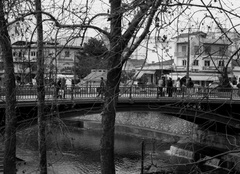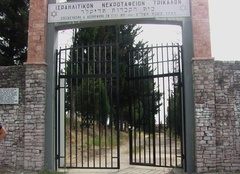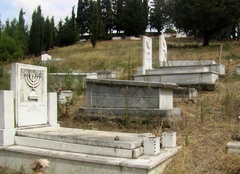Trikala
Greek: Τρίκαλα
The first known Jewish community of Trikala included about 387 families by the mid-1400s. This ancient community of Romaniot Jews spoke the local language of Greek. However, all the Jews of the community were expelled by the area’s Ottoman (Turkish) rulers in 1453.
The next significant Jewish population of Trikala arrived following the 1492 expulsion of Jews from Spain. Over the next decades these Sephardi, or Spanish, Jews were also joined by Jewish immigrants from Sicily, Hungary, and Portugal. Three synagogues built in the Jewish Quarter represented the various cultural backgrounds of the Jewish community: the Romaniot (Greek), Sephardic (Spanish) and Ashkenazi (European) communities all followed their distinct cultural traditions.
Jewish merchants were involved in the wine trade for an extended period of time and became active in commerce and money exchange. Other members of the community produced wool, silk, cotton and linen textiles.
The community was devastated by a large fire in 1749 which caused great damage to the Jewish Quarter of Trikala, including two of the three synagogues. During the failed Greek revolt of 1770, Jewish property was pillaged and money stolen. Still, the Jews of Trikala did not suffer as much persecution as other European communities and made significant contributions to the economic, social, and cultural development of Trikala throughout the 1700s and 1800s.
The 1873 census counted 150 Jewish families in the town, which organized community institutions such as the Orphans’ Association to help those in need. In 1881 Trikala became part of the Kingdom of Greece. Unfortunately, this time was also marked by growing antisemitism across Europe, and the Jews of Trikala faced outbursts of violence throughout the 1890s.
By 1907, 110 Jewish families (265 men and 294 women) lived in the town. In 1913 a Jewish school was founded for up to 70 students. The Jewish community also supported a hospital, sports center and other charitable organizations. In 1930, the dilapidated Greek synagogue was torn down and a new synagogue was constructed in its place.
During World War II (1939-1945), Trikala was first occupied by the Italian army from 1941 to 1943. Then during the subsequent German occupation that began in September 1943, the rebuilt Greek synagogue was converted into a stable. Although many Jews were able to escape to nearby villages or mountains to join resistance groups, a small portion of the community—mostly women, children, and the elderly—remained in the city. Early on the morning of March 22, 1944, German troops surrounded the Jewish neighborhood in Trikala and kicked in doors, dragging Jews into the streets and then piling them into vans. Almost all of the Jews that were captured perished in German extermination camps. Of the 520 Jews who lived in Trikala before the war, 260 survived the Holocaust.
Trikala: Photographs & Artifacts
-
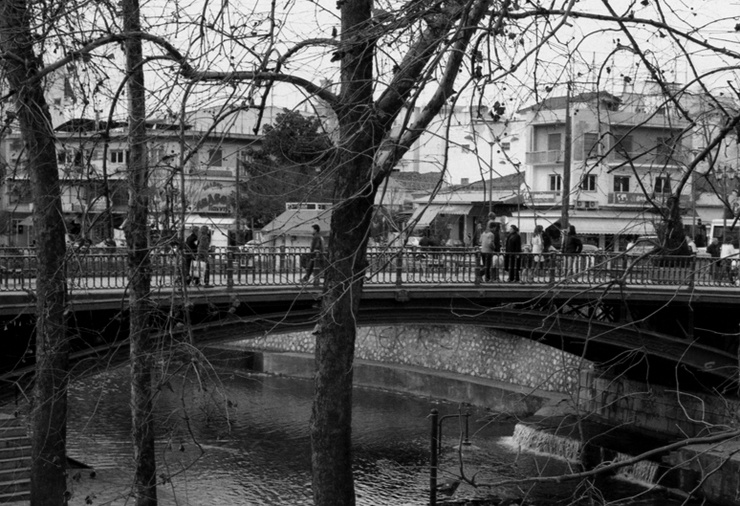 A bridge over the Lithaois River in Trikala, December 2007. © ilias / Wikimedia Commons / CC-BY-SA-2.0
A bridge over the Lithaois River in Trikala, December 2007. © ilias / Wikimedia Commons / CC-BY-SA-2.0 -
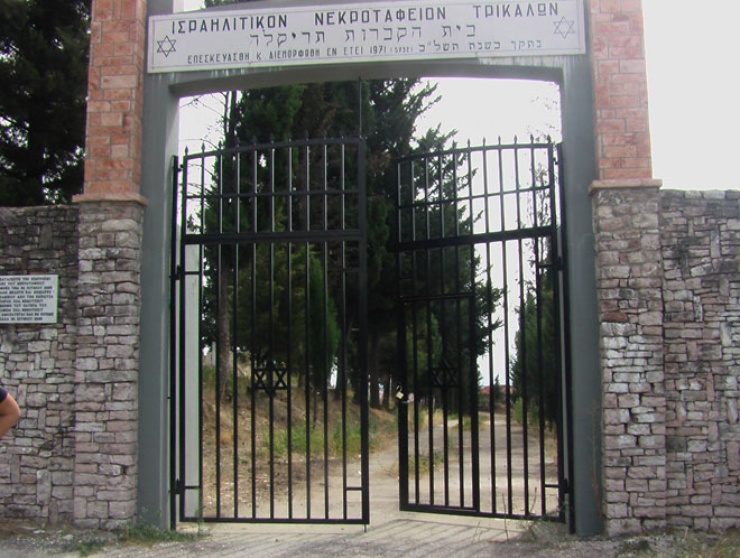 The entrance to the Jewish cemetery in Trikala, April 2010. © ARIE DARZI / Wikimedia Commons / CC-BY-SA-3.0
The entrance to the Jewish cemetery in Trikala, April 2010. © ARIE DARZI / Wikimedia Commons / CC-BY-SA-3.0 -
 Gravestones in the Jewish cemetery of Trikala, April 2010. © ARIE DARZI / Wikimedia Commons / CC-BY-SA-3.0
Gravestones in the Jewish cemetery of Trikala, April 2010. © ARIE DARZI / Wikimedia Commons / CC-BY-SA-3.0
Destroyed Communities Memorial Slope
Trikala: Survivors
Mordechai Roussos was born in Trikala, Greece on March 15, 1920.
